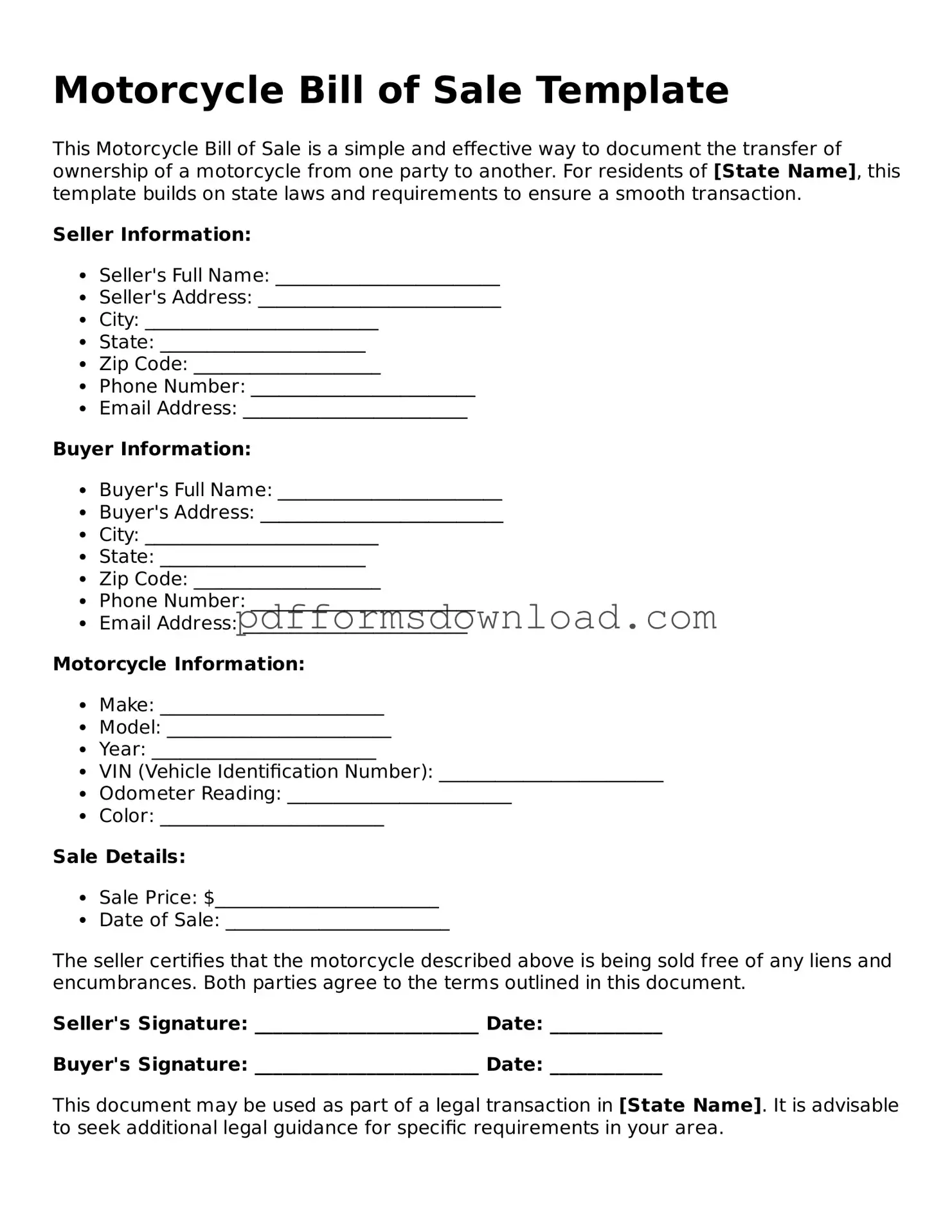What is a Motorcycle Bill of Sale?
A Motorcycle Bill of Sale is a legal document that records the transfer of ownership of a motorcycle from one party to another. It serves as proof of the transaction and includes important details about the motorcycle, the seller, and the buyer. This document is essential for registering the motorcycle in the new owner's name and can help protect both parties in case of disputes.
What information is typically included in a Motorcycle Bill of Sale?
Typically, a Motorcycle Bill of Sale includes the following information: the names and addresses of the buyer and seller, the motorcycle's make, model, year, and Vehicle Identification Number (VIN), the sale price, the date of the transaction, and any warranties or conditions of the sale. Some forms may also include space for the signatures of both parties, which is crucial for validating the agreement.
Is a Motorcycle Bill of Sale required by law?
While a Motorcycle Bill of Sale is not always legally required in every state, it is highly recommended. Many states require this document for registration purposes. Additionally, having a Bill of Sale can provide legal protection for both the buyer and the seller, as it serves as evidence of the transaction and the agreed-upon terms.
How do I create a Motorcycle Bill of Sale?
Creating a Motorcycle Bill of Sale can be straightforward. You can find templates online or draft your own. Ensure you include all necessary information, such as the details of the motorcycle and the parties involved. Once completed, both the buyer and seller should sign the document. It’s wise to keep copies for your records.
Can I use a Motorcycle Bill of Sale for a motorcycle purchased from a dealer?
Yes, you can use a Motorcycle Bill of Sale for a motorcycle purchased from a dealer. However, dealerships often provide their own sales contracts that may serve the same purpose. If you receive a contract from the dealer, you may not need a separate Bill of Sale, but having one can still be beneficial for your records.
What should I do if the seller does not provide a Bill of Sale?
If the seller does not provide a Bill of Sale, it is advisable to request one. If they refuse, you can create your own document. Ensure it includes all relevant information and is signed by both parties. This will help establish proof of ownership and protect your interests in the future.
How does a Motorcycle Bill of Sale affect registration?
A Motorcycle Bill of Sale is often required when registering a motorcycle in the new owner's name. The document provides the necessary proof of ownership for the local Department of Motor Vehicles (DMV) or equivalent agency. Without it, the registration process may be delayed or complicated.
What if there are issues after the sale?
If issues arise after the sale, such as mechanical problems or disputes over the terms, the Motorcycle Bill of Sale can be a crucial piece of evidence. It outlines the conditions of the sale and can help resolve misunderstandings. If necessary, you may need to seek legal advice to address any disputes effectively.
